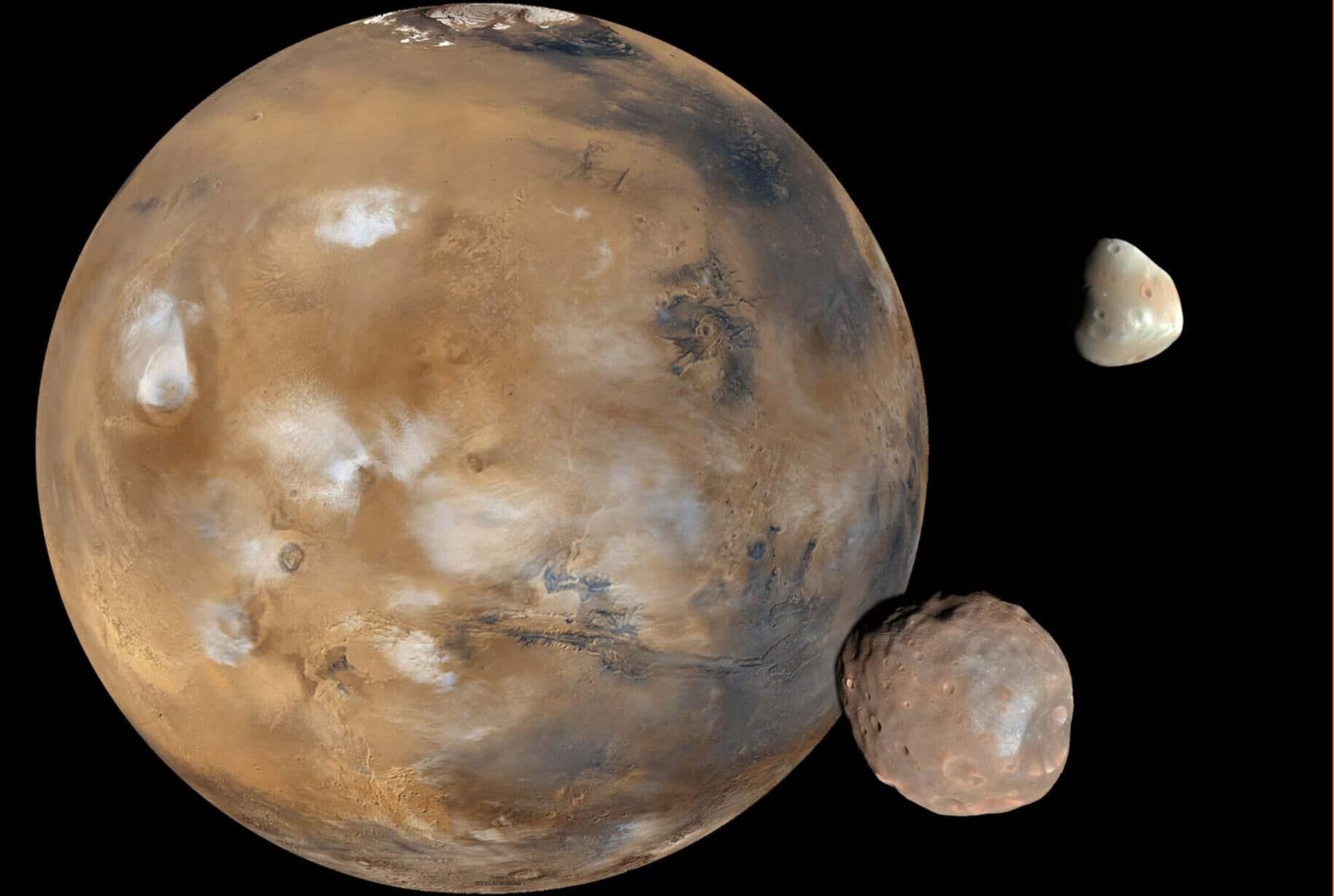
Examining the Moons of Mars

In 2026, researchers from MXN are going to launch a mission to examine the moons of Mars in order to understand more about how they were created. Are they captured debris from the far reaches of space, or are they fragments of Mars which were broken off long ago? Some scientists have recently put forth an intermediate position between the two: they suggest that a passing asteroid broke up to make the two moons Phobos and Deimos. Scientists cannot be sure of which is true before they analyze samples from the surface of the moons.
The oldest account depicting the existence of Mars’ moons comes from Galileo Galilei who described the planet Mars to have a threefold form. This could be attributed to the lack of sophisticated telescopes at the time, so the discovery remained unconfirmed. However, its unconfirmed nature did not prevent people like Voltaire and Jonathon Swift from including the two moons of Mars in works of fiction.
The official discovery of Mars’ moons was carried out by Asaph Hall III in 1877, who spread the discovery with much joy. There was widespread acclaim due to the discovery, and the moons were given the fitting names Phobos (fear) as well as Deimos (terror and dread), to accompany their apparent father Mars whither he goes.
In the 1950’s a Russian scientist claimed that the moons were made of metal shells due to their low density. This was debunked quickly, but the fact remains that the moons do have low density, much lower than the density of the planet Mars.
There are two modes of classifying asteroids in modern science. The Tholen system utilizes visible light incidental qualities to distinguish between kinds of light, whereas the Bus De-Meo method uses infrared light. The visible spectrum of light is only 380 to 780 nanometers in length, while much of the universe radiates at the infrared wavelengths. Although initially used to analyze asteroids, they can also be used to compare moons.
Using the Tholen system, we are given two criteria: color and albedo. The color of a space object is self-explanatory, while albedo is merely the reflectiveness of the surface of the spatial body. These criteria help us to classify three kinds of moon or satellite varieties: C-types from the cold carbon rich expanse, S-types from the warm rocky belt around the sun, and M-types from the hearts of early proto planets. All that we know about the moons is accounted for on spectroscopic evidence, or evidence based on optical observations.
Several theories exist to explain the phenomenological nature of the celestial bodies. Some think that the bodies are resultant from an impact to the planet Mars, but are obscured by space dust. Others think that the moons were asteroids that broke apart and turned into two moons.
This upcoming expedition to the moons of Mars will gather crucial information about its chemical makeup and history. If we have material samples from the moons we will definitively know whether the moons are from the same kind of material as the planet Mars, or not. Further, we will find out whether there are precursors of life or bacteria living on the rocks.
The materials that comprise the moons will tell us a great deal about where the asteroids came from, possibly answering decades of questions.The impact of the expedition could incidentally leave humanity with a great vantage point to observe the planet Mars. Due to be launched next year, the mission will be completed in the year 2031.
Read more about the upcoming mission here.




